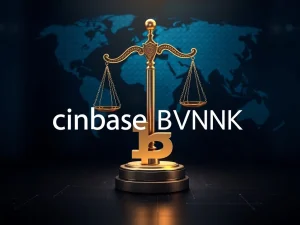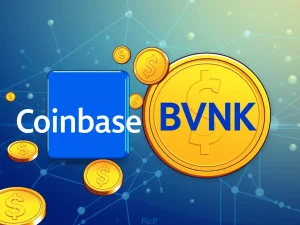Revolutionary: Circle’s Refund Protocol Unlocks Trusted Stablecoin Payments

Have you ever hesitated using stablecoins for online shopping because you worried about getting your money back if something went wrong? It’s a common concern. Traditional payment methods offer chargebacks and refunds, building trust between buyers and sellers. But what about crypto? Standard stablecoin transactions are often irreversible, making many wary of using them for everyday purchases. This is where the **Circle Refund Protocol** steps in, aiming to bridge that gap and bring confidence to **stablecoin payments**.
Why Are Crypto Refunds Essential for Adoption?
Imagine buying something online with a traditional credit card. If the item is damaged or never arrives, you can usually dispute the charge and get a refund. This safety net is crucial for consumer trust. Without a similar system, the irreversibility of typical stablecoin transactions can be a major barrier to wider adoption for retail and e-commerce.
The need for **crypto refunds** isn’t just about convenience; it’s about security and confidence. Users need assurance that their funds aren’t permanently lost if a transaction goes wrong. A reliable refund mechanism makes stablecoins more attractive for various uses, from buying digital goods to paying for services or physical items online.
Understanding the Circle Refund Protocol
Circle’s Refund Protocol is built as a smart contract designed specifically to handle payment disputes in a non-custodial way. Unlike traditional escrow where a third party holds and controls funds, this protocol limits the arbiter’s power strictly to dispute resolution. The arbiter cannot arbitrarily redirect funds or block access indefinitely.
Here’s how it structures the process:
- **Secure Lockup:** Funds are held in escrow via the smart contract for a defined period.
- **Refund Authorization:** The arbiter can only authorize refunds to a pre-specified address provided by the payer at the time of payment.
- **Early Withdrawal Option:** The seller can withdraw funds early, but this requires a mutually agreed fee paid to the arbiter and consent from both parties.
This smart contract approach ensures transparency and locks the dispute resolution process into code, reducing reliance on human discretion and enhancing security for both sides.
Key Features Enhancing Blockchain Payments
The Refund Protocol addresses the missing refund capability in **blockchain payments** using stablecoins like **USDC**. Its key features include:
- **Non-Custodial Escrow:** Funds are never controlled by a single entity. The smart contract governs fund release based on predefined conditions.
- **Mediated Dispute Resolution:** A neutral arbiter helps resolve conflicts if the payer and seller cannot agree. The arbiter facilitates resolution but does not manage the funds directly.
- **Lockup Periods:** Funds remain in escrow for a set duration, allowing time for negotiation or dispute resolution before transfer.
- **Composability and Transparency:** Designed to integrate with other blockchain applications, all transactions are logged on-chain, providing a clear, auditable record.
This protocol is built to work seamlessly with USDC and can be integrated into various platforms like merchant sites, wallets, and payment services, paving the way for mainstream e-commerce use cases.
How the Circle Refund Protocol Works in Practice
The protocol provides a clear, transparent method for handling disputes with USDC payments. Here’s a simplified flow:
- **Payment Initiation:** When a payment is made, funds are held in the protocol’s smart contract escrow instead of going directly to the seller.
- **Dispute & Refund:** If an issue arises (e.g., item not received), the payer can request a refund from escrow. If the seller disagrees, the issue can be escalated to the arbiter.
- **Standard Withdrawal:** After the lockup period expires without a dispute, the seller can withdraw the funds from escrow without needing the arbiter’s involvement.
- **Early Withdrawal:** If the seller needs funds sooner, they can request an early withdrawal, subject to a fee and mutual agreement with the payer and arbiter.
A clever design element is that the refund address is predefined at the time of payment. This prevents arbiters from redirecting funds to arbitrary addresses, enhancing security and privacy.
Benefits Driving Stablecoin Adoption
The Refund Protocol offers several advantages that can significantly boost confidence and use of stablecoins for payments:
- **Enhanced Trust:** The non-custodial nature and transparent dispute process build trust, as users don’t rely on a central authority for fund safety.
- **Transparent Resolution:** On-chain logging allows both parties to monitor dispute progress openly.
- **Flexibility:** Features like predefined refund addresses and conditional early withdrawals offer greater control.
- **Potential Cost Savings:** By reducing reliance on traditional intermediaries, transaction fees could be lower, especially for cross-border payments.
- **Increased Adoption:** By providing a familiar refund experience in a decentralized way, the protocol removes a major hurdle for businesses and consumers considering stablecoins.
Challenges on the Path to Widespread Use
Despite its potential, the Refund Protocol faces hurdles for mass adoption:
- **Wallet Integration:** Seamless functionality requires wallet providers to integrate support for specifying refund addresses and interacting with the protocol’s smart contract.
- **Gas Costs:** Each interaction with the smart contract incurs gas fees. For high-volume, low-value transactions, these costs could be a barrier, depending on the underlying blockchain network.
- **Legal Clarity:** The enforceability of the protocol and the arbiter’s role may need clarification across different legal jurisdictions as stablecoin use grows.
- **Arbiter Misuse:** While limited, the possibility of a malicious arbiter approving unjustified refunds exists. Reputation systems or auditing mechanisms could help mitigate this risk.
- **Fiat Integration:** Integrating stablecoin payment systems with traditional fiat systems remains a challenge for broader consumer adoption.
Conclusion: A Step Towards Mainstream Crypto Payments
Circle’s Refund Protocol represents a significant step forward in making stablecoin payments more practical and trustworthy for everyday use. By introducing a structured, non-custodial method for handling disputes and facilitating **crypto refunds**, it addresses a major gap compared to traditional payment systems. While challenges related to integration, costs, and legal clarity remain, the protocol’s innovative design, leveraging smart contracts and limited arbitration, lays crucial groundwork for building confidence and driving wider adoption of **stablecoin payments** in the digital economy.







